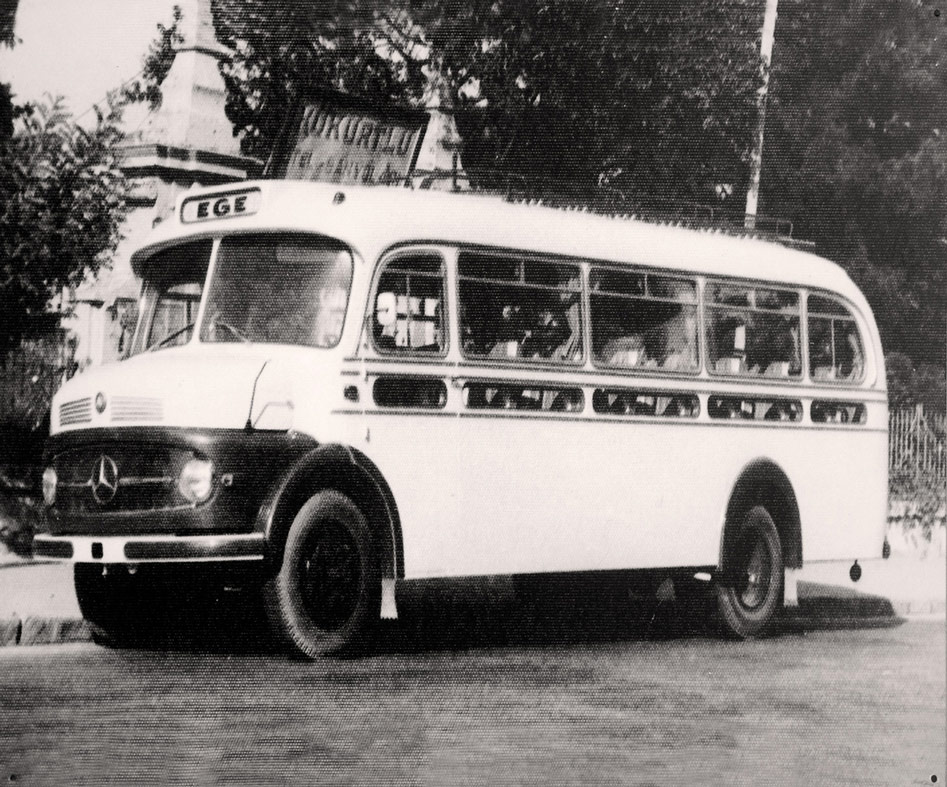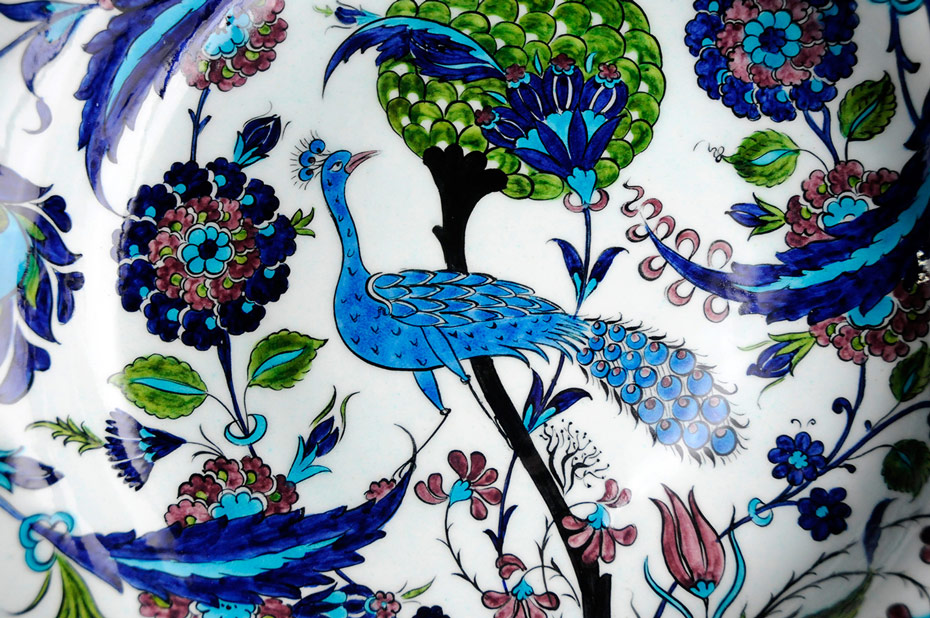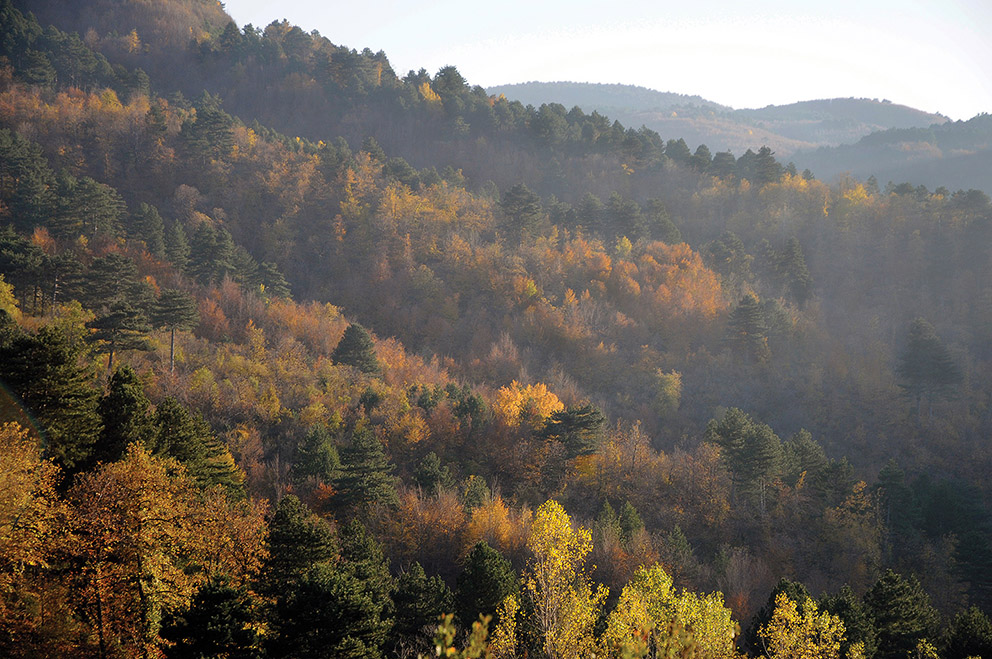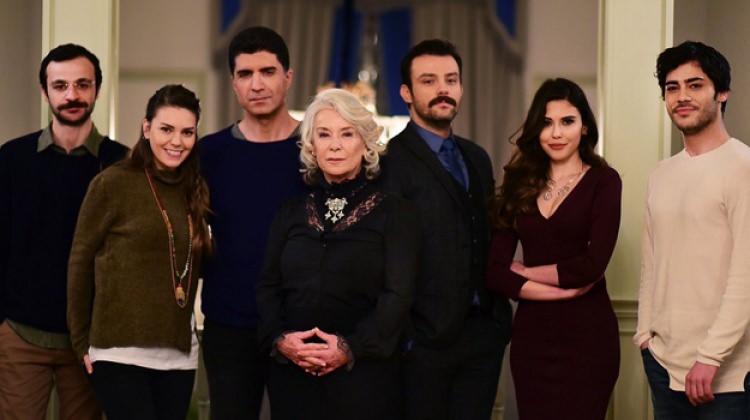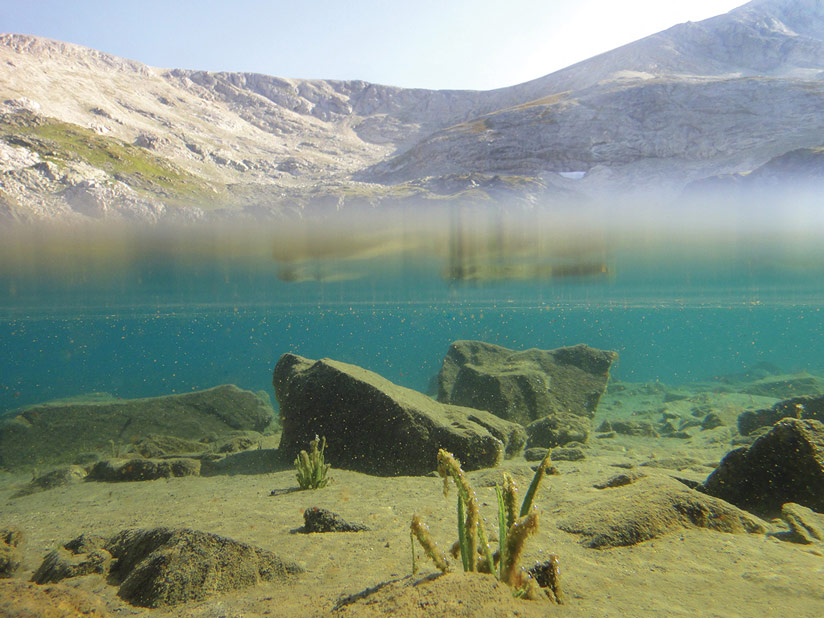Ebedi bir bengütaş…/Sabiha Bengütaş/Mudanya Mütareke Anıtı
Ebedi bir bengütaş…
Mudanya’nın Mütareke Meydanı’ndaysanız, Batı Cephesi Kumandanı giysisiyle sizleri selamlayan İsmet İnönü’yle karşılaşırsınız… Bu anıt, dünyada ilk defa bir kadın tarafından hazırlanan anıt olarak tarihe geçmişti. O kadın, Türkiye’nin ilk kadın heykeltıraşı Sabiha Bengütaş’tan başkası değildi… Yeteneğini ve tutkusunu profesyonel bir mesleğe dönüştüren Sabiha Bengütaş, tıpkı soyadının anlamı gibi iktidarı, sürekliliği, dayanıklılığı ve sonsuzluğu ifade ediyor.
Hazırlayan: Rabia Deniz

Sıcak savaş dönemini sona erdiren, diplomatik dönemin zeminini hazırlayan, Türkiye Cumhuriyeti’nin kuruluş temelini atan bir anlaşmaya ev sahipliği yaptı Mudanya… Mudanya Ateşkes Antlaşması, barışı öngörüyordu, bu nedenle barışın sağlanabilmesi için yoğun çalışmalar içerisine girilmişti. Mütareke görüşmeleri, 11 Ekim 1922’de uzlaşmayla sonuçlandı. Bu tarihe kadar TBMM Hükümeti’ni resmen tanımamış olan İngiltere, artık Türkiye’nin siyasi varlığını da kabul etti. O dönemde Mudanya’da İsmet İnönü önderliğinde atılan barış adımlarının yeni kurulacak olan Türkiye Cumhuriyeti için ne denli önemli olduğunu Mustafa Kemal Atatürk, şu ifadelerle anlatıyordu:

Saygıdeğer Batı Cephesi Orduları Komutanı ve Edirne Milletvekili Korgeneral İsmet Paşa’ya…
Tarafınızdan hazırlanıp sevk ve idare edilen orduların kazandığı büyük zaferin ilk ve en önemli siyasi sonucunu Mudanya Konferansı’ndaki yoğun ve yorucu çalışmalarınızdan sonra elde ettiğinizden dolayı tebrik ve teşekkürlerimi sunarken, Başkomutanı olmakla gurur duyduğum Türkiye Büyük Millet Meclisi ordularının yetkili bir komutanı ve başkumandanlığını yürütmeyi en büyük onur bildiğim yüce meclisin seçkin ve özverili bir üyesine karşı yerine getirilmesi gerekli bir görevi yapmakta olduğum inancındayım.
11 Ekim / Türkiye Büyük Millet Meclisi Başkanı / Başkomutan Gazi Mustafa Kemal

1959 yılında Mütareke’nin 37. kutlama törenleri için Mudanya’ya gelen İsmet İnönü şöyle der:
“Mudanya Mütarekesi’nin en önemli özelliği tek kurşun atılmadan büyük bir toprak parçası Trakya’nın bize teslim edilmesi ve Boğazlar bölgesinin bizim yönetimimize terk edilmiş olmasıdır. Son birkaç asırlık tarihimizde bir kurşun atılmadan kazandığımız tek zaferdir.”

İlklerin kadını
Mütareke’nin imzalandığı kent Mudanya, Türkiye Cumhuriyeti’ni Lozan’a götüren bu görüşmenin mimarı İsmet Paşa’nın anıtını yaptıracaktı daha sonraki yıllarda kentin en önemli meydanına… Bu anıt, dünyada ilk defa bir kadın tarafından hazırlanan anıtı olacaktı. O kadın Türkiye’nin ilk heykeltıraşı Sabiha Bengütaş’tan başkası değildi…

1904 yılında İstanbul’da doğdu. Heykellere şekil veren Türkiye’nin ilk kadın heykeltıraşı olarak anılan sanatçının asıl adı kaynaklarda, Sabiha Ziya Hanım olarak geçiyor. Eyüp Sultan Numune Mektebi’nde ilköğrenimini tamamlamasının ardından Köprülü Fuat Paşa Okulu’ndan mezun oldu. Güzel sanatlara olan tutkusu küçük yaşlarda ortaya çıkmıştı. Okulda, evde resimler yaparken, eğitimini de bu yönde ilerletmişti. 1920’de Sanayi-i Nefise Mektebi’nin Resim bölümüne girdi.
Sanayi-i Nefise Mektebi’nin Resim bölümünde bir yıl çalıştıktan sonra bölüm değiştirerek Heykel bölümündeki erkek öğrenciler arasına ilk kız öğrenci olarak katıldı. Sanayi-i Nefise mensupları arasında açılan sınavda birinci olarak yurt dışına gitme hakkını kazandı. Roma Güzel Sanatlar Akademisinde Prof. Luppi atölyesinde ihtisas yaptı. Sabiha Hanım, Türkiye’ye dönüşüyle birlikte efsaneleşecekti… Yoğun çalışmalar sonucu kısa sürede adını heykel sanatına altın harflerle yazdıran Sabiha Hanım, Abdülhak Hâmid’in torunu diplomat Şakir Emin Bengütaş’la evlendi. Saltanatın son yıllarında başlayan ve Cumhuriyetin ilk yıllarında gelenekselleşen Galatasaray sergilerine 1925’te ilk kez katılan kadınlar arasına girdi.
31 Temmuz 1925 günü açılan sergide üç eseri bulunurken, bunlardan biri Ahmet Haşim’in büstü olmuştu. Sabiha Bengütaş 1938 yılında iki önemli yarışma kazandı. Atatürk ve İnönü için açılan heykel yarışmasında birinci olan Bengütaş, bu heykellerin eskizlerini Türkiye’de hazırlayıp, Roma’da tamamladı. Bengütaş, Mudanya Mütarekesi’ne izafeten, Mudanya’da dikilmek üzere Hayri İpar’ın teşebbüsüyle yapılması kararlaştırılan İnönü heykelinin müsabakasını kazanmıştı. Heykelin kaidesinin taşları Armutlu’dan getirilmişti. İsmet İnönü’yü Batı Cephesi Komutanı giysisiyle sembolize eden heykel, 1981 yılına kadar İskele Meydanı’nda bulunurken, daha sonra Mütareke Evi’nin güneyindeki alanda düzenlenen park içinde, dikdörtgen kaide üzerine yerleştirildi.

Dönemin gazetelerinde Mudanya’da düzenlenen yarışma ve İnönü anıtıyla ilgili haberler, geniş yer bulmuştu. Türkiye’nin ilk kadın heykeltıraşı olarak efsaneleşen Sabiha Bengütaş’ın adı Bursa’da, Batı Cephesi Komutanı giysisiyle Mudanya Mütarekesi’ni sembolize eden İsmet İnönü heykelinden oluşan anıtla hala yaşıyor.
Ebedi bir bengütaş…/Sabiha Bengütaş/Mudanya Mütareke Anıtı
*******
“İtalya’nın harp içinde olması dolayısı ile baş gösteren çeşitli zorluklara rağmen Bayan Sabiha Bengütaş, eserlerini hazırlamaya devam etmiş ve bundan altı ay kadar evvel heykeli bitirmiştir. Heykel 3 metre boyundadır. Ve İnönü’yü askeri üniforma ile göstermektedir. Tamamen Bronzdan yapılan abide, İtalya’da harbin sona ermiş olmasına rağmen taşıt bulunamadığından memleketimize derhal getirilememiştir. Amerikan Deniz makamlarının büyük bir nezaket eseri olarak bundan birkaç ay evvel İstanbul’u ziyarete gelen Missouri zırhlısının refakatindeki Providence kruvazörü, Napoli’den geçerken Bayan Sabiha Bengütaş’ın heykelini de almış İstanbul’a getirmiştir.”
*******
“Abidenin hali hazırda Mudanya’da montajı yapılmaktadır ve muhtemel olarak önümüzdeki ağustos ayının 5’inde büyük bir törenle açılacaktır. Bayan Sabiha Bengütaş, abidenin açılış töreninde bulunmak üzere Mudanya’ya gidecek ve bundan sonra tekrar İtalya’ya dönerek, Bursa için aynı müsabaka gereğince hazırlamakta olduğu Atatürk heykelinin çalışmalarına devam edecektir. Atatürk abidesi dünyanın en kıymetli mermeri olan Karara mermeriyle hazırlanmaktadır. Boyu 3 metre olan bu heykel bitmek üzeredir. Gerek Mudanya’daki İnönü abidesi gerekse Bursa’daki Atatürk abidesi yeryüzünde ilk defa bir kadın tarafından hazırlanan anıtlar olacaktır.”
(Ankara gazetesi, 17 Temmuz 1946).
******
“Heykeltıraşa, on sene evvel iki heykel sipariş etmişler. Bunlardan birisi Ankara Yedek Subay Okulu önüne konacak olan Atatürk heykeli, diğeri ise Mudanya da bir İsmet İnönü heykeli imiş. Atatürk heykeli mermerden, İnönü heykeli ise tunçtan yapılmıştır. Sanatkâr tunç heykeli İtalya’da döktürtmüş. Mermeri ise şimali İtalya’da mermeriyle meşhur olan Karara’dan getirtmiştir. Heykellerin ikisi kırk iki bin liraya yaptırıldığı halde sanatkâr henüz bu parayı almamıştır. Üstelik bütün masrafları kendi cebinden ödemiştir. Bir müddet evvel Mudanya’da İnönü heykelinin küşat resmi yapılmış, fakat Sabiha Bengütaş bu törene davet bile edilmemiş. Kendisi bu hikâyeyi anlatırken, çok asabi idi. Artık bundan sonra hiçbir siparişi kabul etmeyeceğini ve ancak kendi keyfi için çalışacağını ilave etti.
Doğrusu çok sabırlı imiş… Ben olsam heykele haciz koyardım. Arkadaşım yakında Ankara’daki evinde eserlerini göstermek üzere bir toplantı yapacağını söyledi. Herhalde memleket dışında kazandığı muvaffakiyet ve alkışı burada da toplayacağına şüphe etmiyorum.”
(Vatan gazetesi, A.E.Yalman – 21.11.1948).
******
Yerel gazeteler
“Dünyada ilk defa bir kadın tarafından hazırlanan anıt…”
“İnönü heykeli yakında Mudanya’da açılacak.”
“İtalya’da harp içinde türlü güçlüklere rağmen tamamlanan heykeli yurda bir kruvazör getirdi.”
“Birkaç seneden beri İtalya’da bulunan memleketimizin tanınmış kadın sanatkârlarından Heykeltraş Sabiha Bengütaş bir müddetten beri şehrimizde bulunmaktadır.”
“Bayan Sabiha Bengütaş, Mudanya mütarekesi’ne izafeten, Mudanya’da dikilmek üzere Hayri İpar’ın teşebbüsüyle yapılması kararlaştırılan İnönü heykelinin müsabakasını bundan altı sene evvel kazanmış bulunmaktaydı. Sanatkâr, heykelin maketini Ankara’da hazırladıktan sonra Roma’ya gitmiş ve çalışmalarına başlamıştır.”
Kaynak: Güney Özkılınç arşivi
Ebedi bir bengütaş…/Sabiha Bengütaş/Mudanya Mütareke Anıtı
An everlasting bengütaş[1]…
If you are at the Armistice Field of Mudanya, you come across Ismet Inönü who greets you in full uniform as the Commander of the Western Front… This monument has went down in history as the first monument by a woman. That woman was none other than Sabiha Bengütaş, the first female sculptor of Turkey… Sabiha Bengütaş who transformed her skill and passion into a professional occupation represents power, continuity and eternity just like her surname.
Mudanya was home to a treaty that ended the hot war period, paved the way for the diplomatic period while also laying down the foundations for the Republic of Turkey… Armistice of Mudanya predicted peace and hence, significant efforts were underway to attain it. Armistice talks resulted in reconciliation on October 11, 1922. England had not recognized the TBMM (Grand National Assembly of Turkey) Government but from then on accepted the political existence of Turkey. The importance for the Republic of Turkey of the peace steps taken in the leadership of Ismet Inönü at Mudanya were expressed by Mustafa Kemal Atatürk as follows:
Esteemed Commander of the Western Front Armies and Edirne Congressman Ismet Pasha…
While I offer my congratulations and acknowledgements for attaining the first and most important political outcome at the Mudanya Conference of the glorious victory by the armies under your command and control, I believe as the proud Commander in Chief of the Turkish Grand National Assembly armies that I am carrying out an obligatory task for an esteemed and devoted member of the grand assembly.
October 11 / Turkish Grand National Assembly President / Commander in Chief Gazi Mustafa Kemal
Ismet Inönü said the following upon arriving at Mudanya in 1959 for the 37th celebration festivities of the Armistice:
“The most important aspect of the Mudanya Armistice is that Thrace which is a significantly large piece of land has been handed over to us in addition to the Bosphorus region without a single bullet being fired. It is the only victory we have won in our history of several centuries without firing a single bullet.”
A woman of the firsts
The city of Mudanya where the Armistice was signed would end up having a monument erected in the most important square of the city for Ismet Pasha who was the architect of this success taking the Republic of Turkey to Lausanne… This monument would be the first in the world by a woman. That woman was none other than Sabiha Bengütaş, the first sculptor of Turkey…
She was born in 1904 in Istanbul. The name of the artist who has went down in history as the first female sculptor of Turkey shaping statues was Miss Sabiha Ziya. Following the completion of the primary school at the Eyüp Sultan Numune School, she graduated from the Köprülü Fuat Pasha School. Her passion for fine arts had emerged at a young age. While continuing to paint at the school and at home, she had led her education in this direction as well. In 1920, she enrolled at the Painting department of Sanayi-i Nefise Mektebi. After one year at the Painting department of Sanayi-i Nefise Mektebi, she changed her department to Sculpture thus becoming the only female student. She came first in the examination for the members of Sanayi-i Nefise and gained the right to go abroad. She worked as a resident at the workshop of Prof. Luppi in the Fine Arts Academy of Rome. Miss Sabiha would go on to become a legend upon her return to Turkey… Her name had went down in the history of sculpture with golden letters in a short period of time and went on to marry diplomat Şakir Emin Bengütaş who was the grandson of Abdülhak Hâmid. She was among the women who participated for the first time in the Galatasaray exhibitions which had started during the final years of the Sultanate which then went on to become a traditional event during the Republic. She had three works on display at the exhibition that was opened in July 31, 1925 one of which was the bust of Ahmet Haşim. Sabiha Bengütaş won two important competitions in 1938. Bengütaş came first in the sculpture competition for Atatürk and İnönü upon which she prepared the sketches of these statues in Turkey and completed them in Rome. Bengütaş had also won the Inönü sculpture competition that was opened with the efforts of Hayri Ipar to be erected in Mudanya in honor of the Mudanya Armistice. The stones used for the pedestal of the statue were brought in from Armutlu. The statue that symbolized the Western Front Commander İsmet İnönü in his official uniform remained at the Iskele Square until 1981 after which it was placed on a rectangular pedestal prepared on the area to the south of the Armistice House.
News on the competition held at Mudanya as well as on the Inönü statue were all over the press at the time. The name of Sabiha Bengütaş which had become legendary as the first woman sculptor of Turkey still lives on with the Ismet Inönü statue in his Western Front Commander uniform symbolizing the Mudanya Armistice.
*******
“Miss Sabiha Bengütaş continued to prepare her works despite the various difficulties that arose due to the war that Italy took part in and completed the statue about six months before. The statue is 3 meters high. And it depicts İnönü in military uniform. The monument that was built entirely of bronze could not be brought in to our country even though the war was over in Italy since there was no suitable vehicle. The Providence battle cruiser that visited Istanbul about a month ago brought the statue by Miss Sabiha Bengütaş over to Istanbul as a courtesy by the American Naval posts.”
*******
“The monument is currently being assembled at Mudanya and shall properly be opened on the 5th of August with a big ceremony. Miss Sabiha Bengütaş will go to Mudanya to take part in the opening ceremony of the monument after which she will return to Italy to continue her works for the Atatürk statue that she is preparing as a requirement for the same competition. The Atatürk monument is being constructed using Karara marble which is the most precious marble type in the world. This 3 meter high statue is about to be completed. Both the Inönü monument at Mudanya and the Atatürk monument at Bursa will be the first monuments in the world by a woman.”
(Ankara newspaper, July 17, 1946).
******
“Two statues were ordered to the sculptor ten years ago. One of these was the Atatürk statue to be placed in front of the Ankara Officer Cadet School, whereas the other was the Ismet Inönü statue for Mudanya. Atatürk statue was made using marble and the Inönü statue of bronze. The artist had the Inönü statue cast in Italy. The marble was brought in from Karara in northern Italy famous for its marbles. Both statues cost forty two thousand liras but the artist still did not receive this payment. Moreover, she has made all the expenses herself. Opening ceremony was held a while ago at Mudanya for the Inönü statue, but the artist Sabiha Bengütaş was not even invited. She was quite furious when telling us this story. She added that she will no longer accept any orders and shall work only for herself.
Indeed, she is quite patient… If I were in her place, I would impound the statue. My friend told me that she will arrange a meeting at her home in Ankara to display her works. I have no doubts that she will gain the success and acclamation that she recived abroad.”
(Vatan newspaper, A.E.Yalman – 21.11.1948).
******
Local newspapers
“The first monument in the world made by a woman…”
“İnönü statue will be opened in Mudanya.”
“The statue that was completed in war torn Italy despite many difficulties was brought over to our country by a battle cruiser.”
“The renowned sculptor Sabiha Bengütaş who was in Italy since several years shall be in our city for some time.”
“Miss Sabiha Bengütaş had won the Inönü sculpture competition that was opened with the efforts of Hayri Ipar to be erected in Mudanya in honor of the Mudanya Armistice six years ago. The artist prepared the model for the statue in Ankara after which she went to Rome and started working on it.”
Source: Güney Özkılınç archive
[1] Bengütaş is the surname of Sabiha Bengütaş as well as a word meaning “monument” in Turkish.

